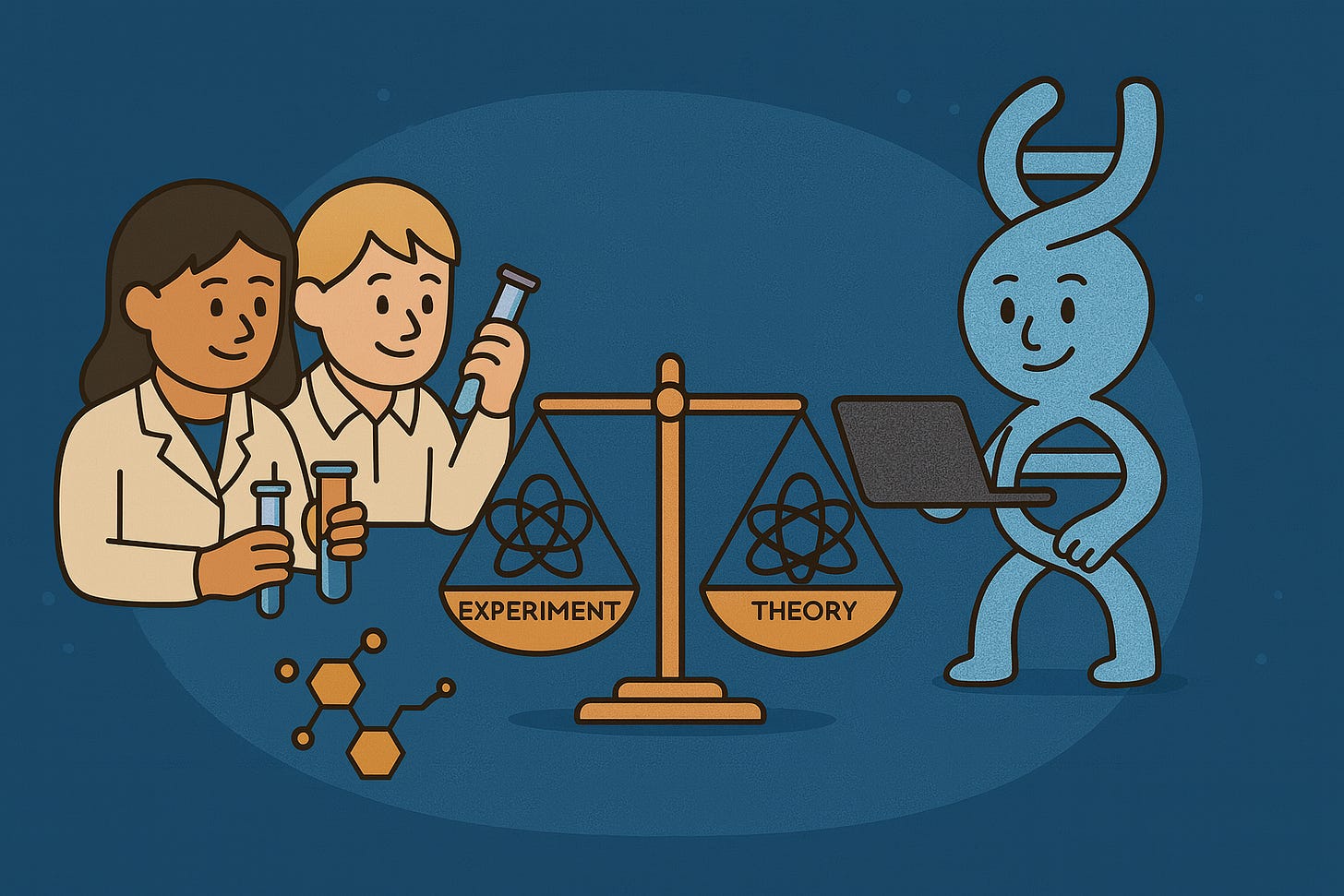IF WET LAB VALIDATION IS ESSENTIAL, WHY USE COMPUTATIONAL METHODS IN DRUG DISCOVERY?
Integrating computational and experimental methods in biology and chemistry accelerates drug discovery, reduces costs, and provides deeper molecular insights.
The integration of computational chemistry and biology with traditional experimental techniques significantly accelerates drug development and reduces preclinical research costs by at least an order of magnitude. Despite the growing popularity of computational methods, researchers working in wet labs still frequently question their utility and necessity.
Historically, applied sciences such as biology and chemistry developed separately from information technologies. Education in these fields typically involves basic training in data analysis and visualization tools, rather than extensive training in programming or high-performance computing.
In recent decades, however, science has become increasingly interdisciplinary and more complex, requiring deep specialization. Although biology and chemistry are closely interconnected, computational methods often remain a distinct domain requiring substantial additional training. Despite the emergence of new programs in computational chemistry and biology, there remains a shortage of highly qualified specialists, since training skilled computational biologists or theoretical chemists takes many years.
The situation is complicated further because computational method protocols are often proprietary or insufficiently detailed compared to widely accessible wet lab protocols. This fosters misconceptions that computational approaches can be mastered quickly, leading to frustration and skepticism among wet lab researchers.
A perceived "Holy War" between theoretical and experimental scientists often emerges, where computational methods are criticized as imprecise or inferior to experimental ones. This view, however, is mistaken. Every scientific method has inherent advantages and limitations. If experimental techniques in biology or chemistry were flawless, there wouldn't be numerous complementary approaches (e.g., NMR, X-ray crystallography, TSA, FRET, SPR, circular dichroism, mass spectrometry) for cross-validation.
Experimental methods have clear limitations:
NMR is limited by target size and sensitivity to large protein complexes;
X-ray crystallography provides static structures without capturing dynamic states and physiological conditions;
TSA (Thermal Shift Assay) detects binding but lacks detailed interaction modes or specific sites;
FRET is limited by proximity between fluorophores (~1-10 nm) and does not account for distal effects;
SPR determines binding kinetics but does not directly identify specific binding sites;
Circular Dichroism misses transient intermediate states and minor structural variations.
Computational approaches, however, face more complex challenges. There are hundreds of software packages, making even experts struggle to navigate the available options. Computational tools vary widely in accuracy (quantum chemistry, semi-empirical, empirical, and machine learning) and physical parameters considered (solvent, pressure, temperature, ionic strength, dynamics). Standard computational research involves molecule preparation, modeling, docking, molecular dynamics simulations, and results analysis. The quality of computational results heavily depends on carefully chosen software protocols and algorithms.
Nonetheless, computational methods complement experiments by interpreting interactions at the atomic level, clarifying molecular mechanisms that might remain obscure experimentally.
Modern machine learning (ML) methods in computational biology and chemistry hold tremendous potential but aren't yet standalone solutions. The primary limitation is not the ML algorithms themselves, but the quality and consistency of experimental data used for training. Experimental results vary significantly due to differences in equipment, protocols, and conditions. Protein structures are dynamic, existing in various conformations (open, semi-open, closed active sites), often inadequately represented in databases. Additionally, conformational changes upon molecular interactions are rarely included in available datasets.
Despite these limitations, intelligent integration of machine learning with computational and experimental methods already yields high-quality analytical and predictive results, significantly accelerating research and drug discovery.
Ultimately, the future of biological research and drug discovery lies in the effective integration of experimental and computational methods. Only this combined approach leverages the strengths of each method, ensuring the highest possible accuracy, deeper insights, and reliability of scientific outcomes.


